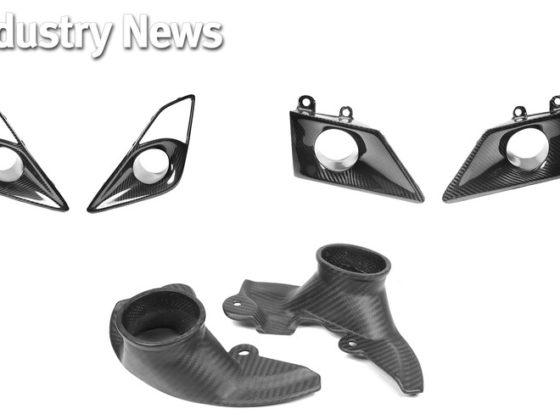
The Viper’s size is visually deceiving. It is a much smaller car than most people realize, especially by today’s standards. It’s 3,375lb curb weight, 96.2in wheelbase, 176.7” x 75.7” x 47.0” length x width x height makes it lighter, shorter, (but 4 inches wider) than a MKIV Toyota Supra. While its 150lbs heavier than a C5 and 75lbs heavier than a C7 Corvette, it’s lower, shorter, and 2 inches wider than both. Compared to the brand new 2015 Mustang, the Viper is over 10” shorter, 7” lower, 0.3” wider and 151lbs lighter (than a manual V6) with a 11” shorter wheelbase.
Consider that in the mid 90’s there were very few cars on the road that could match the Viper’s performance at any price. The Gen 2 GTS dominated the mid-late 90’s with a 4.0 second 0-60, 12.2 @ 119 mph ¼ mile, 192mph top speed, 73.6mph slalom and 1.01 average lateral g (MotorTrend, May 1997). The $105,000 Porsche 911 Turbo and $163,000 Turbo S clawed out a few tenths quicker to 60 (3.7 seconds) but lost out through the ¼ mile and on to a comparable top speed. The $225,000 iconic 1987 Porsche 959 likewise had a slightly quicker 0-60 due to its AWD system (3.6 seconds) but barely edged out the Viper with a 12.0 @ 116mph ¼ mile. The cars are almost neck and neck to its 195mph top speed.

The Viper was quicker than a Bugatti EB 110 to 60 and the ¼ mile and was faster than pretty much everything on the road short of a McLaren F1, Ferrari F50, RUF CTR-2, Lamborghini Diablo SV. It also does great burnouts, which is important for Americans.
There are very few objective performance categories that the Viper did not dominate, other than braking where the horrible brake bias (the car took a rear caliper from a Lotus Elise for crying out loud!) which renders the rear tires almost useless in any decelerating effort. Chrysler apparently tried to make the car safer by not letting the rear tires contribute to braking at all which causes the front tires to lock early. Aftermarket rear calipers with larger piston bores greatly reduce the stopping distance and performance of the car. But despite this and complaints of the car being demanding to drive for the inexperienced, the Viper consistently turned record lap times by various magazines, journalists, and professionals. I guess Shelby’s wishes of making the Viper a performing “Driver’s car” were met.
RACING
I can’t think of any great sports car that didn’t have a successful racing pedigree, and the Viper certainly has a very decorated racing history. Dodge wanted to showcase the handling abilities of the car as well as to boost its global brand image, and racing is a great method to accomplish both. After teaming up with the French racing Team Oreca (who assisted in the Mazda 787B’s 24 Hours of Le Mans win), the Viper GTS-R was created with chassis built by British engineering firm Reynard. Other than the additions of splitters, a wing and a diffuser, the shape of the Viper’s body and panels were very much retained in the race car.

The classic livery of Team Oreca’s Viper GTS-R still looks great even today. With 3 straight wins in the 24 Hours of LeMans, wins in the 24 Hours of Daytona and 12 Hours of Sebring, an FIA GT2 Championship, and two ALMS GTS Championships, the Viper and Team Oreca were a racing powerhouse.
After a disappointing 1996 season competing in the GT1 class at LeMans, Daytona, and Sebring, and an equally lackluster 1997 season in GT2, the Viper returned with massive success in 1998 when Oreca had a 1-2 finish in the GT2 class of the 24 Hours of LeMans as well as taking the FIA GT championship after winning all but one race. 1999 was a similar story, taking the top 6 finishing positions in the GTS class for the 24 Hours of LeMans, the ALMS GTS Championship, 1-2 finish in the FIA GT Championship, and claiming the 24 Hours of Nurburgring overall victory. 2000 would see their 3rd class victory in a row at the 24 Hours of LeMans, a 24 Hours of Daytona overall victory, 12 Hours of Sebring 1-3 podium sweep, and 8 more wins for Team Oreca to take the GTS Championship beating out the factory Corvette C5R for the second year in a row. Needless to say the car was successful.
LIVING WITH A VIPER
Okay, so the Viper is a fast car with a rich racing heritage, but what is it like to live with? Since its inception, the Viper was never apologetic about being a raw, ‘bare-bones’ hotrod. After all, the idea was to be as ‘pure’ of a driving car as the Shelby Cobra and it really wasn’t much more practical than one or a 1950’s roadster. It was never intended to be an all-weather daily driver like a 911 Turbo, NSX, or Corvette. The addition of roll-up windows, locking doors, and outer door handles in the Gen 2 (1996 GTS and 1997 RT/10), made the Viper a far more practical car. The Viper was the first production car to be equipped with electronically assisted door handles, which have no mechanical linkages to the door mechanism itself.
 With the door open, there is only a small opening to insert your legs into the narrow foot well. Unless your body is small or nimble, this is not a car that you want to be getting in and out of frequently on a daily basis.
With the door open, there is only a small opening to insert your legs into the narrow foot well. Unless your body is small or nimble, this is not a car that you want to be getting in and out of frequently on a daily basis.
Despite having to carefully climb over a scorching hot rocker panel (which houses the exhaust) to prevent burning your calf, the ingress is slightly better than the C4 Corvette of the same era which also has high side sills. With proper technique (and preferably long pants for good measure) by putting a hand on the outer fender and taking one foot at a time, getting into a Viper is much easier than a Lotus Elise, which is still not saying much because the Elise is harder to get into than many race cars.



